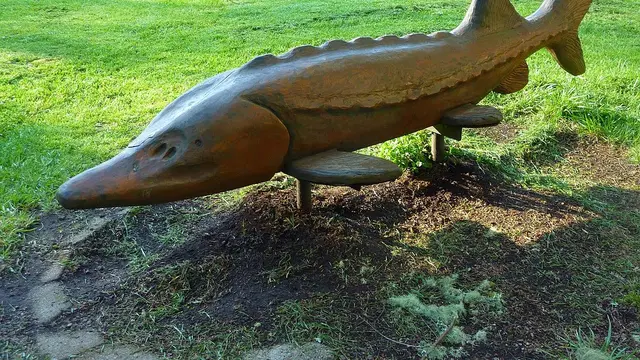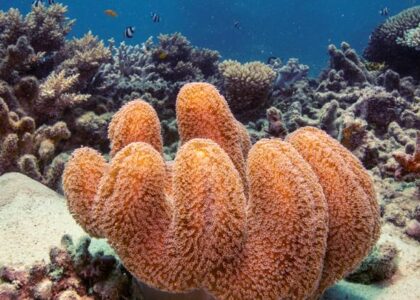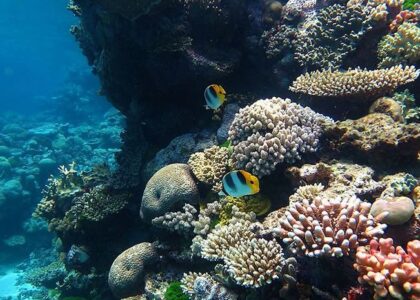Our ecosystem consists of animals and plants that depend on each other, to form a complex network of life.
In an ecosystem , every species plays an important role, whether it is as small as a coral or as big as a whale. So, when one species is threatened with extinction, it can affect the entire ecosystem.
Unfortunately, human interference in nature is pushing some species to the brink of extinction, resulting in deforestation and habitat destruction. Therefore, real and practical conservation efforts are needed.
According to the International Union for Conservation of Nature (IUCN), hundreds of marine species throughout the world are categorized as endangered , even critically endangered.
There are six rare marine animals that are threatened with extinction from the face of the earth as reported by NOAA Fisheries, Tuesday (27/06/2024):
1. Sturgeon Fish

This fish, which belongs to the Acipenseridae family, or more commonly known as caviar-producing fish, can grow up to 16 feet, the equivalent of the length of an average car.
Sturgeon live in riverine and marine habitats along the East Coast.
In the 1800s, sturgeon were prized for their eggs, which were valued as high-quality caviar. The reason is, people flocked to the eastern United States to hunt sturgeon and harvest their valuable eggs.
Since sturgeon were listed under the Endangered Species Act in 2012, they are no longer threatened by direct fishing.
However, unintentional bycatch by commercial fishing gillnets and trawls still poses a major risk to the species.
2. False Killer Whale
False Killer Whales or commonly called False Killer Whales are actually dolphins found throughout the world in tropical and subtropical oceans.
False killer whales are a species in the order cetacea that have a tendency to become stranded en masse on land.
The strong social bonds shared by these fish and other cetacean species are thought to lead them to follow each other into danger.
Like all other marine mammals, the false killer whale is protected under the Marine Mammal Protection Act.
A special population of false killer whales is also protected under the Endangered Species Act.
It is known that the population has declined drastically since the late 1980s and we estimate that there are fewer than 200 of the species remaining.
Interaction with longline fisheries has contributed to this decline. False killer whales are known to take fish and bait from fishing lines, which can lead to unwanted hooking or entanglement.
3. Olive Ridley Turtle
Olive ridley sea turtle ( Lepidochelys olivacea ), also called olive ridley sea turtle in English, is a species of turtle that lives in shallow tropical and subtropical waters.
Like all other sea turtles, female olive ridleys return to land to lay their eggs in the sand. They are excellent navigators and usually return to the beach in the general area where they hatched.
Unfortunately, this behavior makes it easy for individuals to harvest large numbers of eggs and kill large numbers of adult females, simply for consumption. This is the main cause of the decline in the number of ridley turtles throughout the world.
Bans on turtle killing and egg collection in many countries have reduced this threat. However, mass catches in commercial trawl, longline, and gillnet fisheries remain a global threat to the species, and egg collection and killing of sea turtles continues in some countries.
4. Sawfish
Even though their bodies are like sharks, these sawfish are actually stingrays with a skeleton made entirely of sturdy but flexible cartilage.
It is known that this species, which looks like a creature straight from prehistoric times, can be found in the United States, specifically on the coast of Florida.
Sawfish use their long, spiny snouts to slice through schools of fish, swinging them back and forth to impale and paralyze prey.
Their “saws” also contain electro-sensitive organs so they can sense weak amounts of electricity emitted by other animals and allow them to sense nearby prey.
This sawfish relies on shallow estuarine habitats such as red mangroves as nursery areas. However, seaside development in Florida and other southern states has altered or destroyed much of this habitat.
Habitat loss, along with accidental catch in fishing nets, is a major threat to this fish.


:strip_icc():format(webp)/kly-media-production/medias/4235197/original/083967100_1669108678-false_killer_whale.jpg)
:strip_icc():format(webp)/kly-media-production/medias/4235198/original/092684400_1669108678-download__2_.jpg)
:strip_icc():format(webp)/kly-media-production/medias/4235199/original/000566400_1669108679-animal-21731__480.jpg)



